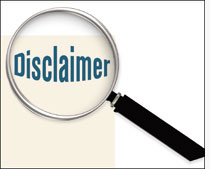Oct 01, 2005For manufacturers, the great promise of radio frequency identification—or more specifically, Electronic Product Code technologies—is the ability to get better information about the location of their products within the supply chain. In particular, many manufacturers see EPC as a way to gain better insights into what's happening downstream in a retailer's distribution centers and stores. But to their dismay, the quality of the data coming back from retailers has not been very good.
"We're very disappointed in the data we're getting back," says an RFID project leader at a major consumer goods manufacturer who did not want to be identified for fear of angering his retail partners. "What we're getting just doesn't reflect what's happening in the back of the store."

Tags on pallets and cases are interrogated when they arrive at distribution centers, when they leave DCs and when they arrive at the backs of stores. Some retailers are providing tag IDs and the time and location the tags were read to manufacturers, so they can see the flow of their products through the retailers' supply chain. In most cases, however, the quality of the data retailers are supplying is not high for several reasons.
One problem is that retailers and manufacturers are not getting the same read rates. Manufacturers say that they are able to achieve read rates of 80 percent to 100 percent on products they ship out to retailers (the low end reflects poor reads on pallets of product that are not "RF friendly"). But manufacturers find the read rates in retail DCs and stores to be far lower. They might ship 100 cases to a retailer and find that no more than half of the cases were read.
The difference can be attributed to the placement of tags on products and the orientation of interrogator antennas. Manufacturers can apply tags on cases in the position that is easiest and most advantageous to them. And they can set up interrogator antennas in the optimal configuration to ensure the highest read rates are achieved when interrogating tags on conveyors, palletizers and stretch-wrappers, and at dock doors. But retailers must deploy interrogator antennas in configurations that can read tags on a wide variety of products, with tags placed in many different locations on pallets and cases arriving from more than 100 different manufacturing sites.
Another reason the read rates are lower in retailers' facilities is that manufacturers typically purchase tags of a single protocol, either Class 1, Class 0 or Class 0+. Retailers must be able to read all these protocols as cases move rapidly down a conveyor in random order. To do this, retailers deploy multiprotocol interrogators, but these can miss tags on cases if, say, they are querying Class 1 tags and a case with a Class 0 tag moves into the read zone.
The situation is likely to get worse before it gets better, because for most of 2006, interrogators in retail stores and distribution centers will need to cycle through multiple protocols to try to read tags using either one of the EPC Gen 1 protocols or the EPC Gen 2 Class 1 protocol. For that reason, retailers are encouraging suppliers to move to Gen 2 tags as quickly as possible.
Another problem with the data, manufacturers say, is that some retailers are not filtering it. They are simply providing all the reads they are getting, and, in many cases, it's not clear to the manufacturer what the reads mean.
Some manufacturers have begun to look to third parties to help filter and analyze data coming back from retailers. Software is used to filter out extraneous reads and draw conclusions from the data. For instance, if 60 cases were read as they were stacked on a pallet and stretch-wrapped before being shipped to a retail DC, and 51 cases were read at the DC, the software infers all 60 cases arrived.
Procter & Gamble is working with a startup called T3Ci, which has created software for analyzing EPC data. Instead of recording transactions, such as when a pallet of product was received by a retailer, TC3i uses EPC data to record the entire history of a product. The system can, for instance, track how long a product has been in the retailer's inventory in a DC and later in the back of the store. That helps the manufacturer fine-tune replenishment algorithms, so it can deliver product when the retailer needs it.
Retailers can also use TC3i's software to filter and analyze reads, even to alert a store manager if a product is in inventory longer than normal. Retailers should benefit from providing good data to manufacturers because manufacturers can use the data to ship product to the right retail DC or store at the right time. But it's not clear if most retailers will use software to capture, filter and analyze reads internally and then pass the filtered data to their manufacturing partners, or if manufacturers will have to take the raw EPC data and filter it.
P&G sees benefit in working with T3Ci, and not just to get filtered data. The companies signed a five-year agreement under which they'll develop software applications that take advantage of EPC data throughout the supply chain. Among the potential applications are those for managing out-of-stocks, store promotions and the introduction of new products. Expect to see other large manufacturers move in a similar direction to solve the RFID data problem.
EPC Gen 2 Interrogator Disclaimer
Thank you for purchasing Fly-By-Nite's Muscle EPC Gen 2 Interrogator. Please note the following disclaimer.
Gen 2 compliant: When we say Gen 2 compliant, we actually mean that we've based the Muscle Interrogator on the EPC Gen 2 protocol. It has not yet been certified as compliant by an EPCglobal-approved test lab. Therefore, we make no guarantee that it will work with EPC Gen 2 "compliant" tags.
Read rates: The read rates we've quoted are taken from tests we did in our lab under ideal conditions. (We conducted the tests in an anechoic chamber with the interrogator antenna 18 inches from a single tag. Staff wore aluminum foil shirts to reflect ambient energy toward the tags.) Rates you get under real-world conditions might vary.
Dense-reader mode: While the Muscle Interrogator does support dense-reader mode, please be advised that it might not actually work with 50 readers within 1 square kilometer. In fact, it probably won't work at all if you have a Gen 1 interrogator anywhere near it.
International operation: We say that our interrogator can operate under frequency regulations around the world. While this is theoretically true, many countries in Europe and elsewhere haven't finalized regulations for use of the UHF band by RFID systems. You will be required by regulatory agencies in many countries to get a special permit to operate the Muscle Interrogator.
Multiprotocol: Our interrogator supports EPC Gen 2 and all EPC Gen 1 protocols. But please be aware that if a Gen 2 tag is moving through the read field at the time the interrogator is looking for Gen 1 tags, it probably won't be read. We are not responsible for bad data and/or any damage to your supply chain resulting thereof.

